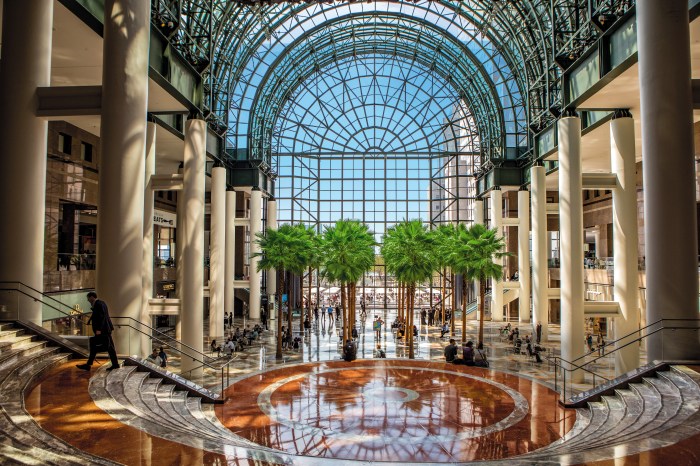Pop culture is littered with iconic depictions of first encounters, from Gertie screaming at “E.T. the Extra-Terrestrial” to the unblemished monolith towering over the apes in “2001” to George McFly being awakened by Eddie Van Halen’s guitar riffs in “Back to the Future.”
Huma Bhabha’s new installation for the Metropolitan Museum of Art’s Cantor Roof Garden initially evokes those otherworldly type of meetings. “We Come in Peace” — the title derives from the 1951 sci-fi film “The Day the Earth Stood Still” — is deceptively simple at a glance, comprising two figures addressing each other, one standing tall, the other prostrate and covered by a black bag.
But a closer look at the exhibit opens a flood of possible interpretations. And that is exactly what Bhabha had in mind.
“That’s what makes a work interesting,” she told amNewYork, “when there are so many ways to think about something. It’s not a one-liner.”
She began the project in August at her studio in Poughkeepsie, she said, sculpting the figures at scale from clay, plastic, cork and polystyrene, then sending them one at a time to a foundry to be cast in bronze.
The 12-foot-tall, gender-fluid standing figure goes by the same name as the exhibit itself, “We Come in Peace.” Five faces encircle the mostly red head. The bare turquoise torso is scored with deep grooves, arms marked with symbols that resemble graffiti or tattoos. Subtle colorations on the feet suggest a journey through blood or fire.
The horizontal figure is called Benaam, an Urdu word which translates to “without name.” Two elongated flat hands reach out from beneath a black garbage bag in the direction of the standing figure. A tail of detritus trails behind the humped body.
“I might have my own views [on the work],” Bhabha said, “but I definitely want to provoke your mind. Because there are many different scenarios you can imagine.”
Aside from the alien invasion ideas, those scenarios could include a meeting between deity and penitent, conqueror and vanquished, rescuer and victim, to name a few. Given the primacy of immigration in our current domestic conversation and the ongoing plight of refugees worldwide, it is impossible not to consider the work in those terms as well.
For Bhabha, the work is “very much an anti-war statement.” She sees the two not as antagonists, she said, believing that “We Come in Peace” is there to help Benaam.
But in her mind the help has arrived too late, Benaam is already dead, in a body bag.
Although even that fact does not necessarily mean the story is over.
“It might rise up,” she said. “Things that you would not imagine might happen. That’s the hope.”
If you go: “We Come in Peace” is on display at the Metropolitan Museum of Art through Oct. 28, 1000 Fifth Ave., metmuseum.org

































